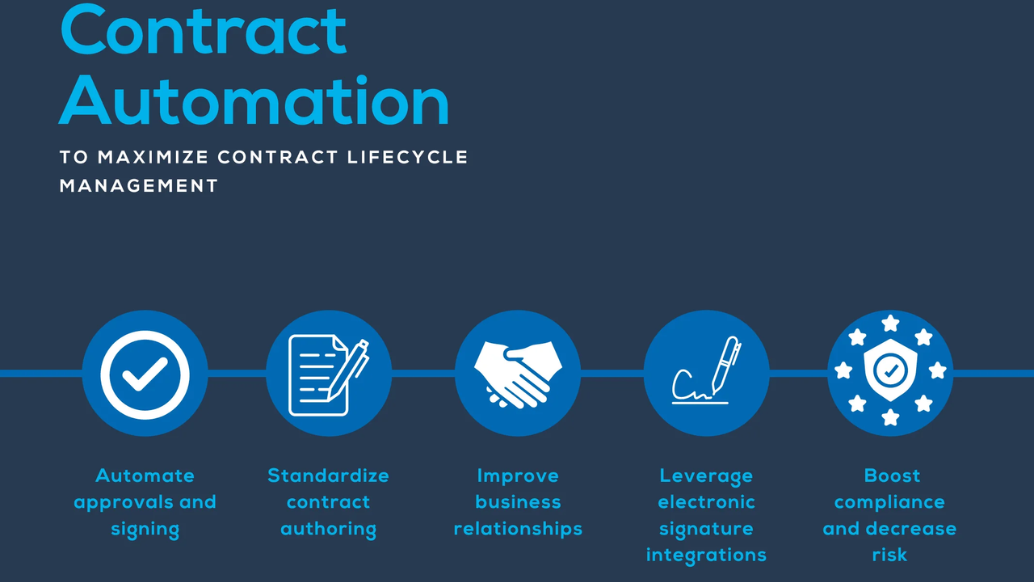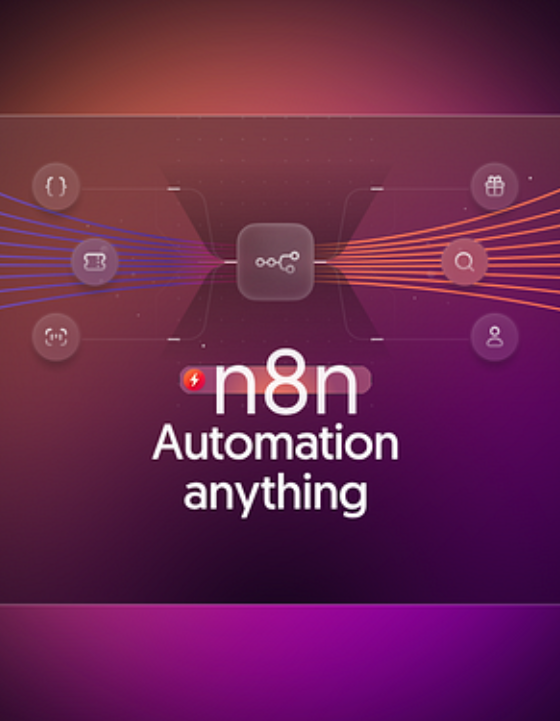Introduction
In today’s fast-paced business world, time is one of the most valuable assets an organization can possess. Every minute wasted on repetitive manual processes takes away from the energy and resources that could be used for growth, innovation, and client satisfaction. Contract management is one area where inefficiency can silently drain productivity and profitability. From drafting agreements to tracking approvals and renewals, the manual handling of contracts often creates bottlenecks, errors, and delays. This is where automated contract workflows transform the game.
By digitizing and automating contract processes, businesses can streamline operations, minimize human error, and gain full visibility over their contractual obligations. Automated workflows not only save time but also ensure compliance, maintain accuracy, and keep teams aligned. In essence, they transform contract management from a cumbersome necessity into a competitive advantage.
This article explores in depth how businesses can maximise efficiency through automated contract workflows, highlighting best practices, benefits, and strategic insights that can position your organization ahead of competitors.
Understanding Automated Contract Workflows

Automated contract workflows refer to the use of technology and software solutions to manage, monitor, and execute each stage of the contract lifecycle without excessive manual intervention. Instead of shuffling paper documents, sending endless emails for approvals, or relying on memory for renewals, automated systems use predefined rules and triggers to move contracts forward.
In a well-designed workflow, once a contract is created, the system can route it automatically to the right person for review, send reminders before deadlines, flag discrepancies, and even integrate with other systems like CRM or ERP platforms. This means every stakeholder is informed in real time, and no critical action slips through the cracks.
Automation also provides a clear audit trail, which is essential for legal compliance. Every change, approval, and timestamp is recorded, making it easier to track contract performance and identify potential risks before they escalate.
Why Manual Processes Fall Short
Many organizations still rely on spreadsheets, emails, and shared drives to manage contracts. While these methods may work for small-scale operations, they quickly become inefficient as the number of contracts grows. The lack of visibility, inconsistent tracking, and human dependency lead to missed deadlines, compliance breaches, and lost opportunities.
Manual processes also hinder collaboration. When contracts are stored in different formats and locations, team members waste time searching for the latest version. Approvals get delayed when decision-makers are unavailable, and critical terms may be overlooked without a central, automated monitoring system.
These inefficiencies aren’t just frustrating they cost money. Missed deadlines can trigger penalties, while overlooked clauses can lead to legal disputes. For businesses aiming to scale, manual contract management simply isn’t sustainable.
The Core Benefits of Automated Contract Workflows
One of the most compelling reasons to adopt automated workflows is the measurable impact on efficiency and accuracy. Businesses that embrace automation often report faster turnaround times, reduced costs, and improved compliance. Let’s explore some key advantages.
Faster Turnaround Times
With automated routing and notifications, contracts move through the approval process far more quickly. Instead of waiting for manual handoffs, the system ensures that as soon as one stage is completed, the next begins automatically. This not only speeds up execution but also accelerates revenue recognition.
Improved Accuracy and Compliance
Automation reduces the risk of human error by standardizing contract templates and clauses. This ensures that every agreement meets organizational standards and regulatory requirements. Built-in compliance checks also help identify missing information or conflicting terms before the contract is finalized.
Enhanced Visibility and Control
Centralized dashboards provide a real-time view of all contracts in the pipeline. This visibility allows managers to track performance, monitor deadlines, and proactively address potential risks. Reports and analytics make it easier to identify patterns, bottlenecks, and opportunities for improvement.
Seamless Integration with Other Systems
Modern contract management solutions integrate with tools like CRM, ERP, and e-signature platforms. This ensures that data flows smoothly across the organization, eliminating duplication of effort and improving overall business intelligence.
How to Successfully Implement Automated Contract Workflows
The transition to automated workflows requires more than just selecting software. It involves aligning technology with business objectives, training teams, and refining processes for optimal performance.
Step 1: Analyze Existing Processes
Before introducing automation, it’s crucial to map out your current contract lifecycle. Identify where delays occur, which tasks are most repetitive, and what compliance requirements apply. This baseline assessment will help you choose the right automation features and set realistic goals.
Step 2: Select the Right Technology
The market offers a wide range of contract management solutions, each with different capabilities. When evaluating options, consider factors such as ease of use, integration capabilities, scalability, and security. A platform that aligns with your existing infrastructure will minimize disruption during implementation.
Step 3: Standardize Templates and Clauses
To maximize efficiency, create standardized templates for common contract types. Pre-approved clauses ensure legal compliance while reducing the need for extensive reviews. This step not only accelerates contract creation but also improves accuracy.
Step 4: Set Clear Approval Workflows
Define who needs to approve each type of contract and in what order. Automated systems can be programmed to route contracts accordingly, send reminders, and escalate delays when necessary.
Step 5: Train Your Team
Even the most advanced technology is ineffective without user adoption. Provide comprehensive training to ensure that everyone understands how to use the new system effectively. Encourage feedback to fine-tune workflows and improve usability.
Overcoming Challenges in Automation

While the benefits are significant, businesses may encounter challenges when implementing automated contract workflows. Common concerns include resistance to change, data migration complexities, and the learning curve associated with new software.
Overcoming these challenges requires clear communication and change management strategies. Highlight the benefits, involve stakeholders early in the process, and provide ongoing support. Address data migration by cleaning and organizing existing contracts before importing them into the new system.
Security is another critical consideration. Contracts often contain sensitive information, so ensure that your chosen platform meets industry-standard encryption and access control measures.
The Future of Contract Management
As technology advances, contract automation will continue to evolve. Artificial intelligence (AI) is already being used to analyze contract language, predict risks, and recommend optimal negotiation strategies. Machine learning algorithms can detect patterns in past agreements, helping organizations forecast outcomes and make data-driven decisions.
Blockchain technology also holds promise for enhancing contract security and verification. Smart contracts, which automatically execute terms when predefined conditions are met, could further reduce the need for manual oversight.
Organizations that embrace these innovations early will be well-positioned to stay competitive in an increasingly digital marketplace.
Real-World Impact: Case Insights
Companies across industries have successfully implemented automated workflows to achieve remarkable results. For example, a global manufacturing firm reduced its average contract approval time from 14 days to just 3 days after adopting automation. A financial services provider reported a 40% improvement in compliance rates and a significant drop in missed renewals.
These successes highlight how automation not only boosts efficiency but also supports strategic objectives. Whether it’s accelerating revenue, reducing legal risks, or improving client relationships, the potential is vast.
Key Takeaways
Automated contract workflows replace manual inefficiencies with streamlined, technology-driven processes. By centralizing documents, standardizing templates, and integrating with other business systems, organizations can save time, reduce errors, and improve compliance. The long-term benefits include faster execution, better visibility, and greater scalability.
Our Opinion
At Soraia, we believe that automation is no longer optional for businesses aiming to thrive in competitive markets. Contract management is a critical area where technology can make an immediate and measurable impact. Investing in automated workflows not only boosts operational efficiency but also frees teams to focus on strategic initiatives rather than administrative tasks.
If you are ready to transform your contract processes and see real results, contact us today. Our expertise in implementing automation solutions will help you achieve the efficiency, accuracy, and scalability your business needs to succeed.




.png)












.png)























.png)














.png)

.webp)





